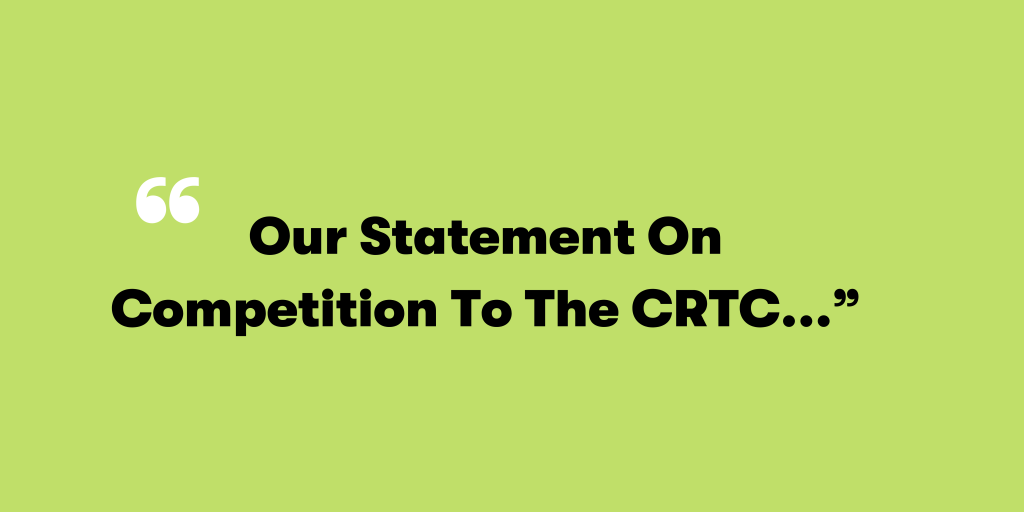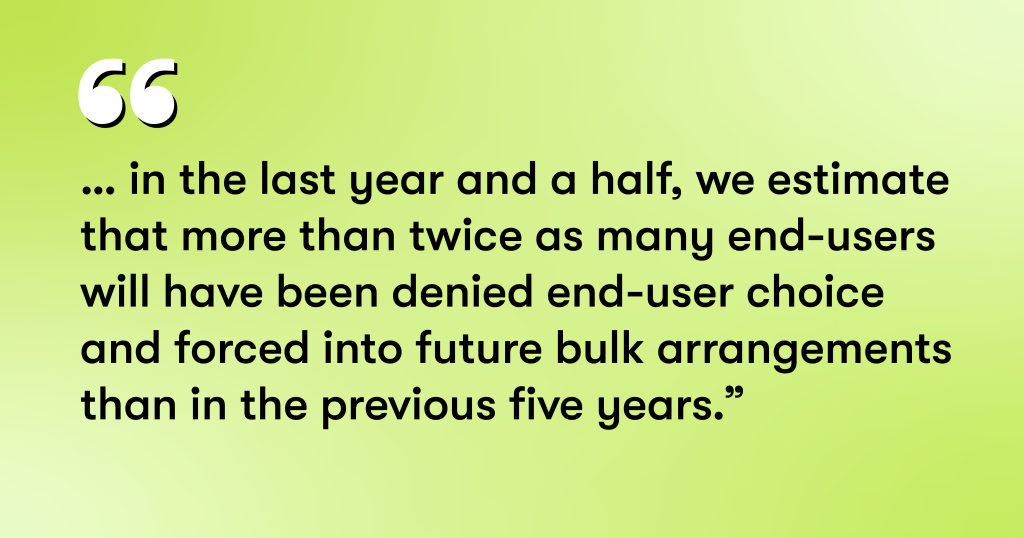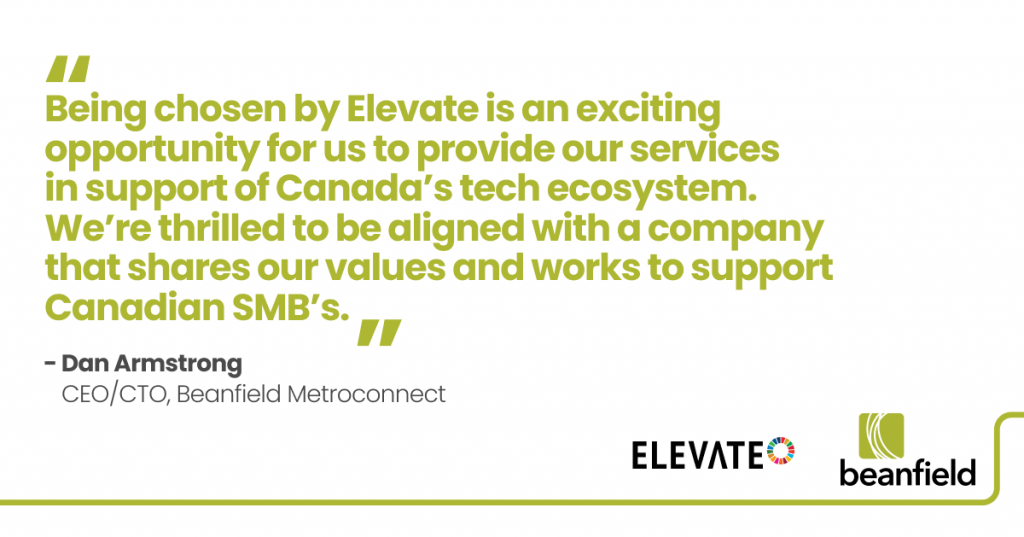This past Monday, November 6, 2023, was another big day for Beanfield and its continued fight to ensure consumers are respected, protected and valued when it comes to their telecommunication services. The CRTC Application we submitted in September and wrote about a month ago has now gone through two key and important steps.
To recap, our Part 1 Application asked the CRTC to disallow bulk provisioning of internet services. We feel that developers shouldn’t speak for “end-users” – the term the CRTC uses to describe a consumer. They shouldn’t have the right to lock future residents into long term telecommunication contracts that deny consumers their choice of provider, speed and technology while completely eliminating all power and leverage a consumer has if the service or product is poor.
In calling out this practice – that had previously been hidden from public and regulatory view because of a series of clever, contractual machinations behind the scenes – we aimed to bring what was hidden in the shadows, to the light. In this, we completely succeeded.
Step 1: “Interventions” from Industry Players, Organizations and the Public on October 26/23
Rogers, Bell, Telus, Eastlink and 5 developers, unsurprisingly, all opposed our Application. While we won’t go into all of the ridiculous linguistic and logistic pretzels they twisted themselves into to try to support what is clearly an anti-competitive practice, the most outrageous statement award goes to Rogers who said…
“…the end-user always retains the ability to choose a different TSP on a tenant-pay basis. Given the low cost of our bulk pricing, such built-in fees do not represent a material impediment to customer switching for end-users that are not happy with the nature or quality of our services.”
In other words, Rogers’ argument was that consumers can always pay twice for internet service – once through their rent or condo fees and a second time based on their own choice. It’s a shocking statement. Sadly, it speaks volumes about Rogers’ true motivation and who it actually cares about (hint: it rhymes with shareholders).
Wonderfully, CNOC (Canadian Network Operators of Canada), PIAC (Public Interest Advocacy Centre), ITPA (Independent Telecommunication Providers Association) and other independent telecoms across the country linked arms with us, supported our case and made waves with clear and direct opinions and examples of just how bad this practice is.
Step 2: Our final response to those “Interventions” on Nov. 6/23
As we brought the application to the CRTC we were then given 10 days to respond to the above opinions.In our 6000 word response, we tried to address each concern, argument, regulatory precedent and policy objective that our opponents raised. In this, our job was to keep it simple – focus on the facts and the result of this bad behaviour – and cut through the linguistic gymnastics our opponents used to confuse or terrify the CRTC into inaction.
So, what next? Well, now, we wait. The CRTC usually takes months to issue a decision and that decision could be any number of things. They could agree and implement our recommended remedies, they could agree and choose different remedies, they could disagree, they could ignore it or they could wrap it into a larger proceeding. We feel that the last three would be disastrous for Canadian consumers so hopefully that won’t be the case. In the meantime we will keep trying to advocate for you and your right to choose your provider and be empowered as a consumer.
On a final note, we think it important to make clear that we do not blame developers for this. If we were developers and were told that this was allowed and we could make money in a way we never had before – we also would’ve jumped at it. Who wouldn’t want free money?!? The problem, we argue, is that this isn’t allowed and they were given bad advice by their partners. This was unfair to them and they’re simply caught in the middle.
We’ll keep you updated!













